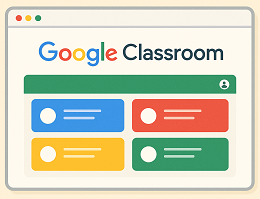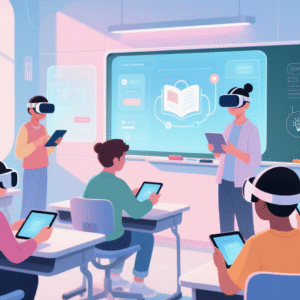In today’s digital age, technology is revolutionizing the way we learn languages. One of the most exciting innovations in this field is Virtual Reality (VR). By immersing learners in realistic, interactive environments, VR provides a unique and engaging way to practice English speaking skills.
The Benefits of Using VR for English Speaking
- Immersive Learning Experience
VR places learners in real-life scenarios where they can practice speaking English naturally. Whether it’s ordering food at a virtual restaurant, giving a presentation, or navigating an airport, these immersive experiences help build confidence and fluency. - Reduced Anxiety and Increased Confidence
Many language learners struggle with speaking due to fear of making mistakes. VR provides a safe, judgment-free space to practice, allowing learners to overcome hesitation and gain confidence in their speaking abilities. - Real-Time Feedback and Pronunciation Improvement
Some VR applications use AI-powered speech recognition to provide real-time feedback on pronunciation, intonation, and grammar. This instant correction helps learners improve their speaking skills more efficiently. - Engaging and Interactive Learning
Traditional language learning can sometimes feel repetitive, but VR makes it exciting and interactive. The gamified elements of VR learning keep students motivated and engaged, making language practice more enjoyable.
Best VR Tools for Practicing English Speaking
- Mondly VR – Offers virtual conversations with AI-powered chatbots in various real-world scenarios.
- Immerse VR – Designed for educators and students, this platform creates interactive English lessons.
- AltspaceVR – A social VR platform where users can join English-speaking communities and participate in discussions.
- ENGAGE VR – Provides a professional setting where learners can practice business English and presentations.
How to Integrate VR into Your English Learning Routine
- Practice Daily – Dedicate at least 15-30 minutes a day to VR-based speaking exercises.
- Engage in Role-Playing – Simulate real-life conversations and practice different speaking scenarios.
- Join Virtual Language Communities – Participate in VR meetups and discussions with native and non-native speakers.
- Track Progress – Use apps with speech recognition features to monitor improvement over time.
The Future of VR in Language Learning
As technology advances, VR will continue to play a significant role in language education. Future developments may include AI-driven personal tutors, more immersive environments, and enhanced voice recognition capabilities.
Final Thoughts
Using Virtual Reality to improve English speaking skills is an innovative and effective method for learners of all levels. By combining immersive experiences with real-time feedback and engaging content, VR makes language learning more dynamic and enjoyable. As VR technology continues to evolve, it will open even more opportunities for learners to practice and master English speaking skills with confidence.
Would you consider using VR to enhance your English learning experience? Let us know in the comments below!






